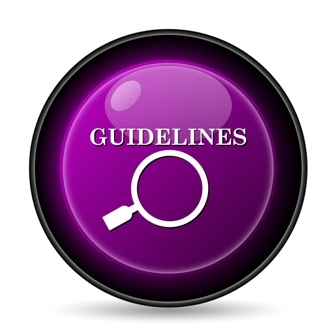Capitalize on These 10 Tips to Code ED Encounters at Higher Level
Hint: Look to HPI to “set tone” for visit. History is one of three components, along with exam and medical decision making, that coders need to consider when making a final decision on what level of evaluation and management (E/M) service to report. Look to history to help justify those higher-level E/M codes for emergency department (ED) encounters, said Linda Duckworth, CHC, CPC, senior manager with Abeo Advisory Solutions, during the company’s April 2021 webinar, “E/M Coding for Emergency Medicine: It Doesn’t Have to Be Traumatic.” Tip 1: Be Flexible About E/M Code Longevity As most coders are aware, the guidelines for using outpatient E/M codes (99202-99215) changed Jan. 1, but the rules for ED E/M codes (99281-99285) remain the same. However, that could change in the future. “We’re still working with the history, exam, and medical decision making (MDM) components to get our code selection, but the American Medical Association has said they’re proposing to make changes to the remainder of the E/M service, possibly switching everything over in 2023,” Duckworth said. “If you’re thinking you have a good handle on MDM, keep in mind that there are significant changes under the new methodology … you’ll have to be prepared for changes in 2023 and may have to change your documentation habits and focus more on the decision making process. Providers will appreciate that, but preparation will be key when that time comes.” Therefore, she urges ED providers to tighten up documentation now, so if and when the coding rules change, you won’t have to make a lot of updates to your recording processes — you’ll be ahead of the curve. Tip 2: Be Careful When Carrying Over Chief Complaint To ensure that you can tally your history correctly, you must have a chief complaint documented. This isn’t typically a problem in the emergency medicine setting, unless the physician carries over the chief complaint from triage or from the nurse without realizing it isn’t thorough. “If you’re carrying that chief complaint over, you have to confirm that it’s accurate,” Duckworth noted. “You don’t want it to slip past you and become an issue down the road. This is more of a risk management issue than a coding issue.” Remember that a chief complaint is necessary for every level of history, so if yours is missing, you may not be able to select any E/M code for your claim. Tip 3: Note Influence of HPI Before Selecting Code When it comes to the history of present illness (HPI), it’s imperative that coders understand the weight of this section as part of the history tabulation. “In my opinion, HPI sets the tone for the visit, and I personally believe it has heavy influence on code selection and necessity,” Duckworth said. “I cannot emphasize enough to providers how important HPI is, because coders read the note and they can get a sense of how complicated a case might be just by reading the HPI. The HPI is the whole investigative process that starts the pathway to your decision making. It really lays the groundwork. I always emphasize with my providers not to overlook the importance and impact of a well-written HPI.” Tip 4: Focus on These 8 HPI Elements Most payers count eight HPI elements: On rare occasions, your payer may fold duration into timing, allowing only seven HPI elements, but in most cases, you’ll want to consider the eight listed above. Tip 5: Know Depth of Each HPI Element Duckworth provided the following breakdown of how to understand each HPI element: Location: It’s important to be specific when discussing location, she noted. If someone reports abdominal pain, note whether it’s in the stomach, the pelvis, or even the chest. Patients may say “my stomach hurts,” when, in reality, they may be having throat pain or pain in the part of their chest that actually could be more cardiovascular in nature. Quality: In this area, you’ll add the characteristics describing what’s going on, such as saying whether a cough is dry or productive. “These descriptors can point a provider in a certain direction, and it’s our job as coders to recognize that information,” Duckworth said. Severity: Give HPI credit for any statement that tells you the severity of the situation, Duckworth said. “Pain scales are easy to fit into this area, but don’t stop there. If the patient says the pain is so bad they can’t walk, or they had swelling the size of a baseball earlier in the day, that’s severity.” In some cases, she noted, “dull” might even speak to severity. A statement like “dull” may instead qualify for quality. “You can use something like that for either quality or severity, as long as you don’t give credit for that one piece of information in both areas. Just pick one,” she added. Duration: This is where you’ll record how long the symptoms have been present, Duckworth said. “I’m always surprised in emergency medicine how often providers miss this, but it’s one of the easiest things to capture if you ask about it.” Timing: Some coders may have trouble differentiating timing from duration, but here’s the difference: If the patient says their symptoms are worse in the morning, or better after eating, that counts toward timing. If they say the symptoms have persisted for six days, that goes toward duration instead. Context: Don’t limit yourself to thinking about this element only pertaining to accidents, Duckworth said. “If the patient says, ‘I just started a job where I’m lifting every day,’ or if they were in a neighbor’s hot tub recently, that actually is going to help your providers during the investigative process.” Modifying factors: Here’s where the physician will record things that the patient has tried or not tried to quell their symptoms. If the doctor asks, “Is it better when you take antacid?” you can count that toward the modifying factors element. Associated signs and symptoms: Whether physicians provide a negative or positive here, coders should give credit for it, Duckworth said. “As long as the physician goes through the work to elicit that information from the patient, we’ll count it.” For instance, if the patient has an itch, the physician may ask whether hives or rash were also present. Remember: “Physicians, you should always write this information down to help coders who are determining which code to report,” Duckworth said. Tip 5: Try This Example to Check Understanding of HPI To get a firm grasp on HPI, check out this example that Duckworth shared: Example 1: A patient presents to the ED with persistent abdominal pain and heartburn for a few days, no changes in bowel or bladder activity, no fever, the pain has been achy and sharp, but worse today. He tried Pepto Bismol and Tums with no relief. Over the weekend, he had barbecue. He’s had issues in the past, but not like this. “This isn’t a lengthy HPI, but look at everything you hit,” Duckworth said. “You’ve got location, quality, timing, duration, associated signs and symptoms, modifying factors, and context. That’s a great HPI and you didn’t have to write a book.” Tip 6: Know HPI May Not Always Be Attainable In some situations, the physician wants to get a thorough HPI, but simply can’t, due to the patient’s condition, age, or language limitations. Example: A mom found her 2 year old eating gummy vitamins an hour ago, but she doesn’t know how many the child ate. The mom brought the bottle to the ED, but noted that the family has been using it for months. The child is acting fine, without vomiting or other distress. The provider looks at the bottle and doesn’t see anything overly alarming among the list of ingredients. “For something like this, it will be hard to get a thorough HPI with a child that young,” Duckworth said. “More than likely, this is a pretty low-level visit, so you may have trouble getting a lot of the HPI elements. There’s no vomiting or associated signs/symptoms, and you do know the context. But what if the bottle had involved grandma’s cardiac medications? Totally different story. The documentation challenges might be the same, but the provider would have to get as much information as possible because high-risk drugs were involved. So the provider would want to document all the limiting circumstances and information to help drive that history.” To offset the fact that you can’t get a lot of information in this situation, you should document the limiting circumstances like the patient’s age or severity of the condition, and explain why you can’t get as much HPI as you’d like to, Duckworth said. “You should also document the severity of the condition so you can potentially waive some of the requirements and still code to the level you should based on necessity.” According to the 1995 E/M documentation guidelines, “If the physician is unable to obtain a history from the patient or other source, the record should describe the patient’s condition or other circumstance which precludes obtaining a history.” This rule also applies to the HPI elements, so just make sure the physician documented as much as possible. Some payers address this specifically, and say that you should include why the components were not obtained. Part B payer Novitas, for instance, says that the documentation should include your attempts to obtain the information and the specifics of your attempts. If the parent is doing the best they can, that’s your attempt to get the information. “As an auditor, if I see a patient came in and the providers had problems getting information from them, and the physician comments, ‘Had three conversations with spouse,’ I might wonder why they didn’t get the information from the spouse. So if a caretaker is involved, document that you made the effort to get that information and potentially say why you couldn’t. It’s not automatically a freebie if you can’t get the information — you must document that you tried and why you couldn’t get it.” Tip 7: Go Beyond Diagnosis in ROS When it comes to completing the review of systems (ROS), you shouldn’t simply add a diagnosis — that’s not enough detail, Duckworth said. “You have to note that you checked each system with a positive or negative response,” she added. The only time you can use the phrase “negative per HPI” in the ROS section is if the pertinent systems are individually documented in the HPI, Duckworth notes. “The pertinent systems must be individually documented somewhere, you can’t simply use a blanket statement to cover them in each section, she says. “Those little documentation shortcuts can become problematic.” Tip 8: Stay Wary of This Phrase Although it may be tempting to rush through the ROS by writing “All other systems negative,” use caution when employing this phrase. “This implies you checked every system, and if a healthy patient comes in who banged their toe, as an auditor I’d think it’s overkill that you checked all systems, and you may lose credibility in an audit,” Duckworth said. “If we see this on every one of your charts no matter the circumstances, we may think, ‘This provider does 14 systems on every single patient no matter what?’ It doesn’t make sense. If it’s not applicable, don’t use the phrase at all.” An exception might be for teaching institutions, where as part of training, medical students and residents do often inquire about all of the ROS elements. Tip 9: Don’t Count on Payment With “Not Pertinent” PMFSH For past medical, family, and social history (PMFSH), the terms “non-contributory” and “not pertinent” can be problematic, depending on your payer. “Part B payer Palmetto, for instance, doesn’t accept the term ‘non-contributory’ on its own,” Duckworth said. “It doesn’t indicate whether you did the work or not. If you want to use those phrases, you should at least rephrase them and say, ‘Reviewed and found to be non-contributory.’ If you’re reviewing it, make sure I can find it if I’m looking at your record.” Tip 10: Look to Lowest Section to Choose History Level You should strive to be as thorough as possible in all of the history sections (chief complaint, HPI, ROS, and PMFSH), Duckworth said. “If you have just one element covered in the review of systems, you have an expanded problem focused history, even if you have an incredible HPI and great PMFSH. That’s why you can’t fall short in any of these areas.”





